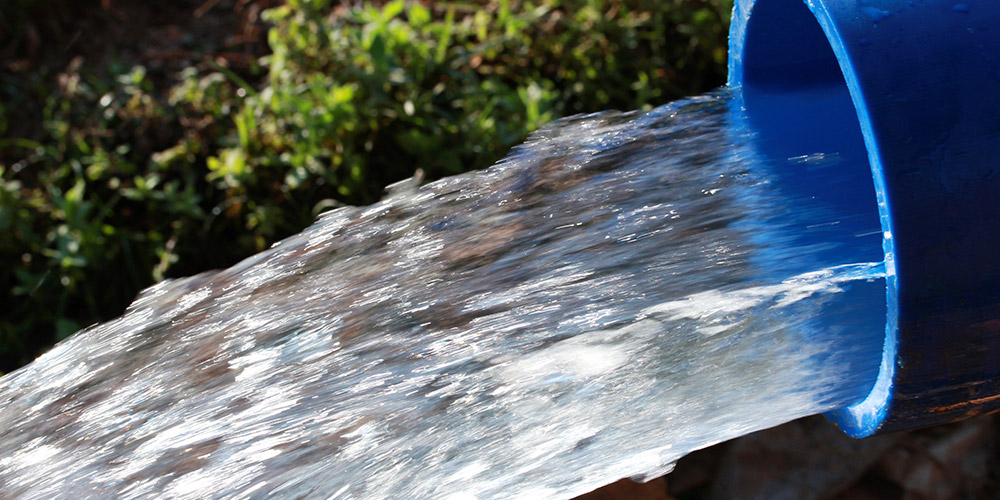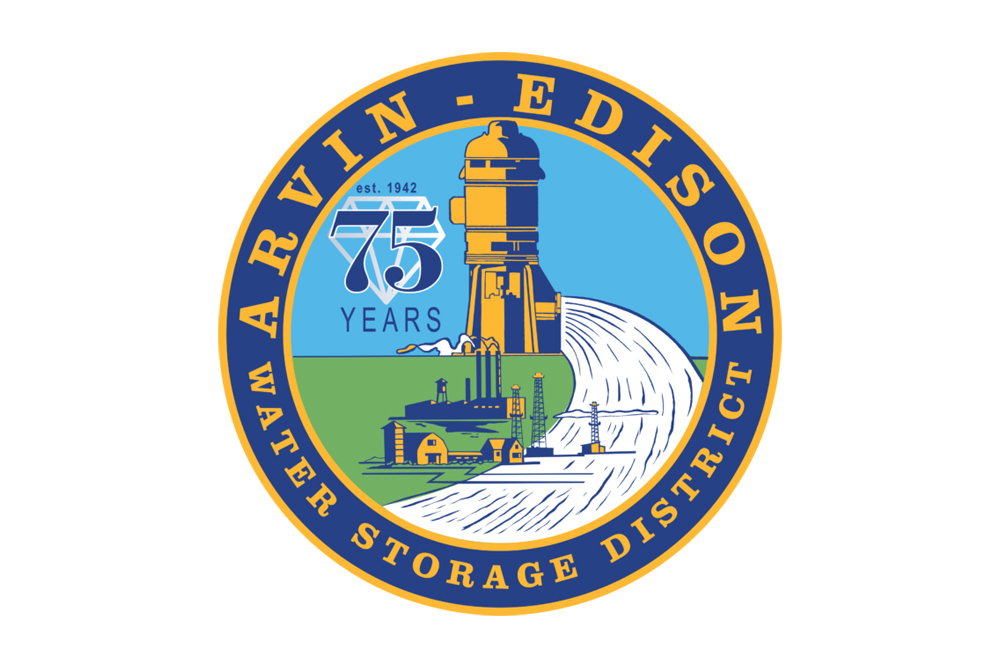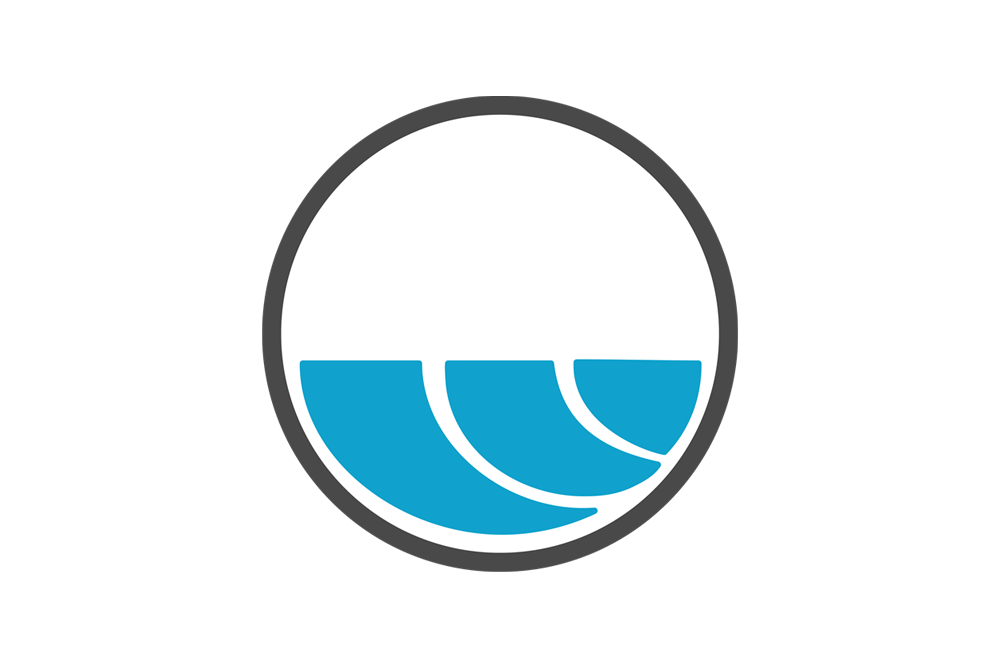The California Water Commission met in Sacramento on Wednesday, December 13, 2017. Today’s meeting was focused around the 11 applications for Prop One funding under the Water Storage Investment Program projects. The WSIP presentations were expected to take all day and it was said the time limit was 35 minutes per project; we’ll see. Chairman Armando Quintero kicked things into gear at 9:00 am. I left my pocket knife in the car but there were no metal detectors or pat downs to go through to gain entrance to the building. Quintero did point out the emergency exits. I saw many familiar faces amongst the 70 or so folks in attendance, but Commissioner Dave Orth wasn’t present – at least as I write this early in the meeting.
Executive Officer Joe Yun reported there have been additional letters of comment on several of the Water Storage Investment Program projects. Under commissioners’ reports Joe Del Bosque reported he spoke with some farmers in Mendota yesterday to explain SGMA.
I’ve heard there was going to be a bus load of farmers from the Valley. It will be interesting to see how much support each applicant will be able to deliver and how much credence that will be given by the CWC.
Chino Basin Conjunctive Use Environmental Water Storage/Exchange Program
Joe Grindstaff, retiring General Manager with the Inland Empire Utility District of Chino and Halla Razak current GM gave a quick presentation claiming the basin is well managed and adjudicated. The project would bring banked water from other parts of the state to the basin. The poorer water quality from other basins would be treated. Like many if not most of the programs the Chino Basin project brought in a great deal of support from community and environmental groups.
As a side note there are four television screens in the room. It is theater style seating with a dais at the front. The room is big enough to make the commissioners’ name plates difficult to read from the back of the room. So, the tv screens help and also project the slide shows. However, there is a time delay that makes the speakers’ images trail behind the actual movements which in turn creates a delay in the way the mouths move compared to the sound. It’s like watching an old kung fu movie.
Kern Fan Groundwater Storage Project
Eric Averett, GM Rosedale Rio Bravo Water Storage District made the presentation. Averett said not having enough storage for carryover a great deal of the water that could have been captured was lost to storage. The banking area will be in western Kern County near federal, state and local supplies and conveyance including the Kern River. The partnership will include RRBWSD and the Irvine Ranch Water District. There would be a new turnout from the California Aqueduct to a 10-mile, 500 cfs canal to move water to the 1,050 acres of recharge basins with an annual recharge capacity of 100,000 a/f. The benefits claimed include waterfowl habitat and would save Northern California water for enviro usage. As a rule the new banking facilities will help raise the groundwater levels in Kern County and help meet SGMA requirements. The total value of the benefits was presented as $177.8 million was said to be larger than the cost of the project. I didn’t get the exact ratio but that sounded good. Averett explained to the board Article 21 water is only available during wet years and would be the best source. The questions from the commission indicated there wasn’t much knowledge of how DWR allocates water. Averett also had to explain federal Central Valley Project and Kern River water would also be sources for supplies. Commissioner Andrew Ball asked why a new canal would be needed as after all there are other existing canals. The answer of course, is there are greater supplies during wet times than conveyance. Quintero also pointed out the recharge rates in certain parts of the Valley should be mapped and developed. Commissioner Maria Herrera wanted to know how many other contractors want the same water. Averett said the supplies for this project are left over from the allocations.
Brent Walthall, Kern County Water Agency said Kern County is the world leader in groundwater banking. He said not only can the Kern Fan project bring technical expertise it can also bring a unique element of institutional expertise. He said the relationships already established in the area will also be a major asset to the project.
Los Vaqueros Reservoir Expansion Project
The Contra Costa WD was the entity presenting this proposal. The LVR is a 160,000 a/f off-stream storage facility in Contra Costa County and CCWD is also the operator. The object is to expand the benefits of enviro, supplies, improved quality and enhanced recreation. In addition to raising the dam new pumps and pipes will be constructed to move supplies. One of the biggest benefits listed was helping provide water to the CVP wildlife refuges – many located near Los Banos. LVR is south of the Delta, so that is also a big benefit. Normal SWP and CVP supplies with extra Delta flows would help to increase the total storage after the expansion to 275,000 a/f, about half of Millerton Lake. The proponents are asking for $400 million. Ball said the presentation was easy to understand and asked why the expansion has been conducted in phases and was told some of the partners were not ready. Some of the facilities already exist and one of the big ones is owned by East Bay Municipal Utilities District. Commissioner Joseph Byrne asked about refuge water supplies and was told
CCWD knows the demand schedules on a month to month basis most of the time. Should the refuges find its water in San Luis Reservoir in danger of spilling it can use that first and reserve some supplies in LVR.
Thomas Nesar, (sp?) Alameda County WD said when there is a disruption in the Delta it makes it difficult to supply its constituents. He said the LVR expansion will give his agency much more flexibility. Jason Peltier, Executive Director of the San Luis Delta Mendota Water Agency spoke next saying SLDM has been partnering with CCWD and supports this project. He said the CVP is a broken project with increasing shortages that have been dealt with by transfers and land fallowing. Fallowing in particular can be tough on a region’s economy. A staffer from the assemblyman from the area spoke in support. Also speaking in support was the Grasslands Refuge as did a group of waterfowl enthusiasts saying only five percent of California’s wetlands remains. Anthea Hansen, GM Del Puerto WD spoke in support. DPWD is a member of SLDMWA and a leader in innovative water management.
Pacheco Reservoir Expansion
Our friends from Silicon Valley, Gary Kremen, Director of Santa Clara Valley and Garth Hall with Jeff Cattaneo San Benito WD led the presentation for the Pacheco Reservoir Expansion. The Pacheco Pass WD owns the existing 6,000 a/f reservoir located near San Luis Reservoir. The plan is to expand the reservoir to 160,000 a/f. This will provide further South of Delta Storage, flood control and environmental benefits for the wildlife refuges as well as cold water for the steal head trout. SCVWD supplies Silicon Valley urban and ag. When San Luis Reservoir gets low the water quality gets “iffy” and sucking sludge becomes cost prohibitive treatment wise. Having the extra water stored would prevent this and allow an extra 200,000 a/f of low point storage in SLR. Hall explained the expanded reservoir will be deep and there shouldn’t be much of an algae problem. The EIR and design of this project is well underway. As with any other project in California the flooding of Indian burial grounds must be contended with. But there is no problem expected there.
Support from SLDM’s Peltier was readily given. Pacheco Reservoir will provide direct benefit to SLDM members it will benefit all members by allowing a lower draw point on SLR. Joe Tonascia, Director SBWD pointed out the Pacheco River also flows into Monterey Bay and the water quality will be helpful. Another spokesman for disadvantaged communities, La Raza and NAACP was in support for the benefit of flood control. Kremen closed by reminding the commission SCVWD will be operating and managing the new dam and has an incredible amount of experience in construction and maintenance. In addition, Westlands WD was in support. The meeting then took a break.
Pure Water San Diego Program North City Phase I
The Utilities Director for the City of San Diego gave the presentation saying it will support a third of the city’s water supplies and can help improve the discharge into the Pacific Ocean. He said things are shovel ready. San Diego is also facing a water shortage as numerous problems plague imported supplies. It sounded to me the project will basically take waste water and treat it. The treated water (up to 33,000 a/f annually) will be used instead of dumped in the ocean. It will require a pump station and pipeline upgrade. The existing water treatment plant will be upgraded and a new “Pure Water” facility will further treat the water and then sent to a reservoir. Part of the project includes capturing methane from the land fill to provide power for the new facility. Ball commented this looks like a project that will go forward with or without Prop One funds and I think that is the case. Del Bosque asked about the habitat plan and was told this will be done at the reservoir. Commissioner Carol Baker asked what invasive species were referred to in the application but the biologist wasn’t present. This saves the Delta 33,000 a/f of exports or does it? It reduces import demands but part of the imports come from the Colorado River. I didn’t hear a clear answer to this. The San Diego folks said the figure of SWP water demands reduced is in the application. Ball asked them to find that figure and provide him with it. Struck me as a faux pau. Quintero said he believes it is 4,000 a/f of Delta reductions and I think it was settled as that. Del Bosque asked if there are other parts of Prop One funds and one of the San Diego guys said there is no other class of funds available. Herrera asked for elaboration about the public outreach of drinking treated water. She was told polls show a majority of the public support of the project. Even a local brewery developed a Pure Water Beer. Brine will be discharged into the ocean and I can’t imagine how that’s a problem.
Platinum Advisors of Sacramento presented a brief video of Mayor Kevin Faulconer talking up the project but unfortunately the audio didn’t engage at first. It was rewound and his honor pretty much did a recap of what was already said. With that the meeting broke for lunch.
Sites Project
A lady named Kim Van, I believe, gave the Sites Project presentation. She said Sites is a once in a lifetime opportunity for the Water Commission to further bold and strategic water supply enhancements. Project Manager Jim Watson said more than 1.8 million a/f additional storage will result from Sites. A 12-member board representing 33 public agencies has determined it wants a partnership with state and federal resource habitat and fishery managers.* The project is located on the west side of the Northern Sacramento Valley and is an off stream storage site with a canal linking it to the Sacramento River. It can tie into both the CVP, the SWP and as yet to be developed banking operations as far away as areas receiving Colorado River supplies. Direct releases into the Colusa Basin Drain could benefit Delta Smelt. The claim was made that Sites operates better during dry years.
Curtain asked what the enviro benefit would be and was told it could be as high as 50 percent of the benefits if it is allowed by the CWC. It’s an expensive project, perhaps the most expensive this side of the California Water Fix with a funding request of $1.6 billion. Someone asked about how well stakeholders are receiving the possibility of having their lands permanently flooded. Ms. Van replied her family’s original farm was located on the bottom of Lake Berryessa and the growers in the area realize if they want their children and grandchildren to continue farming something must be done to increase water supply.
A man from Friends of the River gave the first opposition of the day. He was concerned stopping flood flows could be a harm to the environment. The Sierra Club’s Kyle Jones said the enviro community is concerned. The San Bernardino WD’s GM spoke up in support saying the Sites project has embraced its enviro obligations. He also pointed out it is a rare chance for both North and South to work together. Noah Oppenheim West Coast Salmon Fishing Industry thinks it will damage salmon fisheries and would violate California Water Law by taking Sacramento River water, storing it off stream to heat up and returning salty tea back to the river. Danny Merkley of the California Farm Bureau spoke in support of Sites citing statistics cited about Sites’ role in helping provide storage against climate change. That was fun to write. Another GM of one of the investing public water agencies said the cold water pool provided by this project will be of great benefit to endangered fish. Watson said Sites water could replace water on the Trinity River that could be used to chill out the fish. He offered complete cooperation with the CWC.
South Sacramento County Agriculture & Habitat Lands Recycled Water, Groundwater Storage and Conjunctive Use Program (South County Ag Program)
This project will require 14-miles of pipeline to deliver 50,000 a/f for irrigation and recharge to 16,000 acres of ag land located between I-5 and Highway 99 south of Elk Grove. The applicant claims more than $1 billion in public benefits and does have the blessings of the Sierra Club. The project will cost an estimated $373 million. Some of the graphs showed a map with blood-red coloring of areas with groundwater more than 20 feet deep. While that doesn’t sound like much to me this could increase wildlife habitat by 4,500 acres – perhaps. It wasn’t clear if sandhill crane, vernal pool and wetlands/riparian forests were counted twice or not. But, one of the bigger problems in the Delta is wetlands have been decimated by almost 90 percent due to development. Some believe that may be a large contribution to the stress on smelt and salmon. The project will also allow 30 percent of the banked groundwater to be extracted during dry times relieving the use of surface water from the Sacramento River and Consumes River.
Ball asked what existing facilities are already in the area and was told a waste water treatment plant not included in this proposal. And he was assured 70 percent of recharged supplies would not be pumped but the project is an in-lieu project so surface deliveries will counter act pumping. Jones of the Sierra Club let them know he was all a-twitter for it. So was the Farm Bureau and staff representing local elected officials. One thing mentioned as a fact by many of the presenters is recycled water is drought proof. I guess that is true in as much as if there comes a time when there is no recyclable water left it won’t matter anyway.
Chairman Quintero said it looks like there will be a 45 minute to an hour of public comment on the next item so we took a break.
Temperance Flat Reservoir Project
Here is one of the projects close to home for me, building another dam on the San Joaquin River at Temperance Flat. Engineer Bill Swanson gave the presentation saying Friant Dam on Millerton Lake was built to provide the capture of snow melt on the SJR to provide irrigation and flood control for one of the most productive ag regions on earth. However, Friant Dam isn’t good for very dry years or very wet years as it can’t hold enough water. It has to be filled and emptied several times. Building Temp Flat would shore up reliable supplies and provide flows of the right temperature at the right times. Water could be accrued from the SJR as well as using water from San Luis Reservoir or other sources south of the SJR. Swanson showed how Temp Flat could result in an almost incredible increase in fish benefits. Flood control, emergency supplies and hydropower would improve. The cost ratios show positive benefits. Swanson pointed out the main conveyances on the SJR, the Madera Canal and the Friant Kern Canal are in need of fixing. The conveyance has dropped due to subsidence.
Curtin asked about plans to integrate the extra water into recharge. Swanson said every investor would have the enhanced opportunity to recharge as they can use Temp Flat as one end and the recharge bank at the other. Ball asked how long it would take and Swanson told him if it was up and running it would have filled twice last year. In 2011 it would have filled. There will be no impact on the operation of Millerton Lake and the water in Temp Flat could start filling as the dam is being built. The interests in additional financing has change dramatically in the past couple of years. Coalitions between big and experienced water users have and are forming to invest in this project. Baker asked who would represent the state in terms of public benefits should Prop One money be spent. Swanson said he expects the contracts with Cal Fish & Wildlife and perhaps DWR are included in the application. This entails the monitoring and management as well as adaptive management. Swanson said the US Bureau of Reclamation, DWR, the coordination with the CVP and many other considerations are at play so this is a complex project. But the vision is far reaching. Del Bosque asked about the relationship between Temp Flat and the other rivers. Swanson said there are seven other rivers on the east side of the Valley within the Friant area. The water on those rivers become available at the same time as the SJR. The SJR is by contract and the other rivers are often by water right, making the local supplies cheaper than the CVP. How to manage the local supplies in play with the SJR is something Temp Flat can provide. He said similar benefits can be realized on the west side of the Valley as well by using SLR in conjunction with Temp Flat.
Assemblyman Juan Arambula spoke first about how his district is the most polluted and impoverished in the state. The region needs the water was his main message. He was followed by Assemblyman Jim Patterson who said enough water from the SJR has washed out to sea to supply the City of Fresno for more than 100-years. He and many others were wearing campaign type pins that with the letters “TFR” on them. I couldn’t figure out what it stood for. Senator Anthony Canella had his staff speak in support as well. He used the social justice term referring to the thousands of farmworkers and teachers having to work and not being able to be here while they drink contaminated water. Assemblyman Rudy Salas sent a staffer to object to sending water out to sea needlessly and wants Temp Flat. The Friend of the River guy said none of the information given today was available to the public. The numbers, he claimed are false and the SJR gorge will be flooded, oh my. There was a place up there were we used to party. I don’t go up there anymore, probably won’t miss it. Jones from the Sierra Club said there is plenty of room to bank the water in the way over-drafted SJ Valley. He didn’t explain where the water would be stored before it is banked. Tulare County Supervisor Kyler Crocker spoke in favor as did a Supervisor from Merced County. They both said the additional storage and flood control will be in themselves an economic boost to the area. Kings County Supervisor Doug Verboon said Kings is one of five counties that have joined together. He pointed out Kings County won’t get any direct water from the San Joaquin River with or without Temp Flat. However, he believes Temp Flat will benefit the entire Valley. He asked how much better off the communities of Avenal and Mendota would be if they had enjoyed the same water supply reliability as Southern California has under the SWP. Alan Autrey, former mayor of Fresno and actor told the commission Temp Flat can help the Valley that helps the state that helps the nation. The Central Valley by itself is bigger than many states and does not need to be mired in welfare due to a lack of water. Tommy Esqueda, City of Fresno Public Utilities Director spoke about efforts already underway to leverage more surface storage to meet the SGMA and growth needs. The mayor of the City of San Joaquin, Rudy Dhaliwal said unfortunately his city is one of the poorest in the state and the nation. Reliable surface water will increase prosperity and surface storage is no longer a dirty term. Jeff Payne from Friant Water Authority said an investor group for Temp Flat has been formed and is underway. Peltier spoke again today saying the needs and priorities of California is the environment and the co-equal goals of reliable water supplies is ignored. The value of South of Delta storage will resonate throughout the region and the state. Steve Chedester, Executive Officer of the Exchange Contractors said his group has senior rights on the SJR. He supports Temp Flat because it shores up his supplies even more. Merkley spoke again saying the California Farm Bureau supports this project because it helps ease so many of the challenges begin faced today. Jody Riley of the California Cotton Growers spoke in favor and gave the commission documentation of support of the various county Farm Bureaus in the SJ Valley. Rob Nash of the California Almond Growers gave his groups blessing. Nathan Alonso, Greater Fresno Chamber of Commerce said the stability this will allow agriculture will help to expand other industries and opportunities in the region. Alvaro Preciado, Mayor of Avenal said his city has to provide water for not only his city but also the state prison. For him and his community water means food on the table. Ron Stork, Friends of the River said he lived in the Valley and belonged to the Sierra Club. He said Temp Flat support is hope over reality and this project won’t help at all. He said the SJR is dried up almost all the time and there couldn’t be a worse place to locate a dam. He said the Valley has real problems and needs real solutions. Dave Steindor, with White Water said the lose of the SJR gorge would be a big problem for his group. He said Temp Flat just won’t pencil out. Tulare County Supervisor and Temp Flat JPA Chair Steve Worthley summed up the support of Temp Flat by saying if there isn’t a reservoir to help recharge the groundwater much of the nations most valuable and productive farm land will dry up and be fallowed.
Tulare Lake Storage & Floodwater Protection Project
Semitropic Water Storage District General Manager Jason Gianquinto presented the Tulare Lake Project. He said the project is a Kings River flood water impoundment on 15-30,000 acre large ponds at Westlake Farms in the Tulare Lake bottom near Kettleman City. That water can be sent to Kern County down the California Aqueduct. The application is for $454 million. There is a planned expansion of the Semitropic banking facilities to account for the extra water this will bring to the area. Not only excessive Kings River flows but Article 21 Water from the SWP could also be stored in Kettleman City until better banking opportunities arise downstream. Gianquinto said the South of Delta supplies could replace cold water turnouts at Keswick on the Sacramento River near Shasta. There will be flood prevention benefits but they appeared small at $3 million because almost all the land to be saved from flooding is ag land and that doesn’t equate so much. This project improves flexibility in the SWP and improves reliability for local supplies.
Herrera asked how the project would get water of the Kings River. Gianquinto said this water is above what can be used by the Kings River rights holders. He said they tried to work with the Kings River folks but it has wound up in front of the State Board to get a permit to use this water. Byrne asked about the DWR’s rights. Gianquinto said DWR let some extraction rights lapse and will regain them after the board hearing.
Joe Hughes, Kings River Water Association said the true benefits go to Sandridge Farms partnerships. More than letters of opposition have been sent to the CWC. And he wants no public money going to this project. Steve Haugen, KRWA GM said there are benefits that come with this project but the benefits don’t take place in the Kings River service area. For more than 50-years the Kings River has been fully appropriated. Charles Peterson, Supervisor Kings County spoke out in opposition to this project saying the overdraft is serious to the point infrastructure could be damaged. He said the Kings Board visited Semitropic and all they found was a public agency willing to do whatever is necessary to further the desires of a private landowner. Mark McKean Chair North Fork Kings GSA spoke out against the project saying it makes no sense to take water from one critically over drafted sub basin to another over drafted sub basin makes no sense. Dhaliwal said meeting SGMA is one things but providing clean water to the people of the area and the water is needed for that. Mark Gilke, GM Tulare Lake Basin Water Storage District is also in opposition to this project. He is concerned about the flood hazards. Paul Paschall, GM Kings River Conservation District said this project would use the Kings River as the main conveyance and the problem is the Kings River channel is plugged up and would flood. Another problem is there is no funding available for this. Phil Desatoff, GM Consolidated ID said his district’s sole source is Kings River water. CID has invested in a long-term recharge program that includes the local cities. Learning of Semitropic’s water grand CID along with Fresno ID and Alta ID filed applications with the State Board first. CID recharged 400,000 a/f this past year and will fight this project to the bitter end. Esqueda spoke again saying the City of Fresno has spent $500 million to use the surplus water in the new treatment plants. This water is coming from the already fully appropriated Kings River. Luke Serpa, City Manager of Clovis said California is facing a housing shortage and Clovis has certain obligation to provide housing by mandate. The only source of surface water is the Kings River. Clovis is actively searching for water and opposes this project. Gary Serrato, GM Fresno ID and Executive Director of the North Kings GSA said he sees a project with no water right in a river already fully appropriated for the past 50-years and finally Semitropic isn’t in the area of origin or place of use. He said this project was designed to benefit an individual landowner and he urged the commission to deny any funding. A letter was written by an attorney on behalf of FID and Alta ID in opposition to a $600 million water project without any water. The attorney whose name I did not get said this project has no benefits for anyone on the Kings River. Farmer and Chairman of the McMullin Area GSA Don Cameron said to achieve sustainability the Kings River sub basin needs the Kings River water to stay in the Kings River area. There is already a flood control capture project for Kings River water. He said the disadvantaged communities will collapse.
Under closing comments Gianquinto said the south fork of the Kings River has more capacity than formerly believed. He said despite the fully appropriated status of the Kings River flood water leaves the area. He said he believes there is enough flood water to satisfy everyone’s needs and he’s willing to work through the fear and misunderstandings.
That was sad to see in a way. The meetings took a break
Willow Springs Water Bank Conjunctive Use Project
Now I’m back in unfamiliar territory. The Willow Springs Water Bank used to be the Antelope Valley Water Bank. The GM, Mark Beuhler said it is a typical water bank facility with a pipe in the California Aqueduct that can move 280,000 a/f annually to a banking facility. He said CalPERS own the project and his firm manages it for the state employees’ retirement group. Flows on the Feather River at Oroville help the fish and its South of Delta location helps provide emergency supplies. He described the project as very green; running on solar power, maintaining farming in the area and countering climate change. The water source will be spills from SLR or Oroville. He said the project leverages water from the reservoir system. An amount of the yield from the extra storage in Oroville will help the young salmon. The public benefit ratio is 2.6 and that is a conservative figure. He believes the largest single load of electricity is the Edmonston Pumping Plant that moves SWP water over the Tehachapi Mountains into Southern California. If that load can be reduced during the summer at peak times by taking water for banking at other less expensive times. The CEQA is finished and a JPA is in place. He’s ready to start construction as soon as the CWC makes up its mind. Willow Creek could be up and running very soon capturing a lot of the water while the other projects are still in construction and is a bank for emergency needs should the Delta have a problem.
Ball asked about the expansion of storage from half a million to one million or more a/f. Beuhler said the facilities don’t change as much as the paper work. He said he can put as much water in the ground as can be conveyed. He said it percolates at a very fast rate. Recovery is limited by wells. Since the project can be sourced as a public/private project there’s room for a build as you go approach. CalPERS kicked in all the initial equity and will hold WSWB to task on a return. Curtin asked what amount of the water that is pulsed get into the water bank. Beuhler said if there was 100,000 a/f block of water he sends it to Met WD and Met swaps its SLR water for Oroville water and such. Beuhler kept saying he was moving water up to Oroville instead of exchanges. That confused Baker who felt Beuhler was talking about paper water and wanted to know how that benefits the environment. He explained how a paper spill in SLR shuts down pumping. The project costs $343 million and the application is for $306 million. Del Bosque asked about the pulse flows counting as ecosystem benefits. He asked if that water already there was going to be used as a pulse flow anyway. Beuhler said there are blocks of water dedicated to contractors that has to be used but doesn’t count as pulse flows. There were no public comments pro or con.
Centennial Water Supply Project
Project presenter Nevada ID is headquartered in Grass Valley. The project is on the Bear River and the Centennial Reservoir will be locked between two other reservoirs. A rolled concrete dam will be installed and could be finished in 18 months. The new reservoir will provide better cold-water deliveries downstream and increase wetlands habitat. The cost is estimated at $324 million and the application is for only $12 million. There will be new camping and recreation facilities including trails and non-highspeed water usage. The speed limit will be five miles an hour. But a tanker airplane can swoop down and get water for fire fighting and the lake acts as a fire break between the two counties located on each shore. There is a filing of 110,000 a/f on the Bear River that isn’t being used. There was enough spill from the other reservoirs on the river to fill the new reservoir. Also, if the climate guys are correct and most of the winter water in snow turns to rain NID will need the water. Commissioner Catherine Keig asked what is happening to the unsaved water now. I didn’t get the answer much more than it runs downstream. There is some opposition. Steindor from American White Water cast doubt on the demand for reservoir recreation is even needed. Instead NID’s new reservoir will remove semi-primitive camping opportunities. A gal named Gene Tamo (sp?) represented a community of something; and this community is concerned about this project and hasn’t found NID to be either qualified or transparent on the matter. Linda Booth also represented a community extremely concerned about how the Yuba River will impacted by NID’s efforts to store more water on the Bear River. She said it destroys oak and pine woodlands as well as swimming holes, fishing holes and hiking trails. More public benefit would be lost than gained. Steve Roth of California Rivers said whether or not the dam should be built no public funds should be granted and listed reasons. He said there is not net improvement, public benefit or reason to build this so don’t give them money. That will only encourage them. Stork got back up in the public comment seat for Friends of the River and deputized to speak on behalf of the Sierra Club. Stork congratulated NID for not asking for much money. He also applauded NID for not trying to get a new water right on the Bear River. But Stork said even that was too much. Curt Lorzens, former planning commissioner at Yuba County. He said the Willow Springs project is much more experimental interesting idea than the Centennial Reservoir idea. He urged the commission to put it out of its misery and save everyone else much time and effort to kill it anyway. He said NID needs to go home and fix its leaky ditches. Tracy Shannon Foothills Water Network said it already cost $75 to camp for a weekend at a NID campground but only $10 to camp at Bear River campground. Somehow this project will also harm the Delta according to Shannon.
Quintero made the motion to recess until tomorrow morning and we all stood up and walked around.
DISCLAIMER OF RESPONSIBILITY; Waterwrights.net strives to provide his clients with the most complete, up-to-date, and accurate information available. Nevertheless, Waterwrights.net does not serve as a guarantor of the accuracy or completeness of the information provided, and specifically disclaims any and all responsibility for information that is not accurate, up-to-date, or complete. Waterwrights.net’s clients therefore rely on the accuracy, completeness and timeliness of information from Waterwrights.net entirely at their own risk. The opinions expressed in this report are those of the author and do not represent any advertisers or third parties.
ALL RIGHTS RESERVED. Copyright 2017 by Don A. Wright No part of this publication may be reproduced, stored in a retrieval system, or transmitted in any form or by any means, electronic, mechanical, photocopying, recording, or otherwise, without the prior written permission of DAW. *Be careful what you ask for.
CALIFORNIA WATER COMMISSION – Chairman Armando Quintero, Vice-Chair Carol Baker, Andrew Ball, Joseph Bryne, Daniel Curtin, Joe Del Bosque, Maria Herrera, Catherine Keig and Dave Orth

































